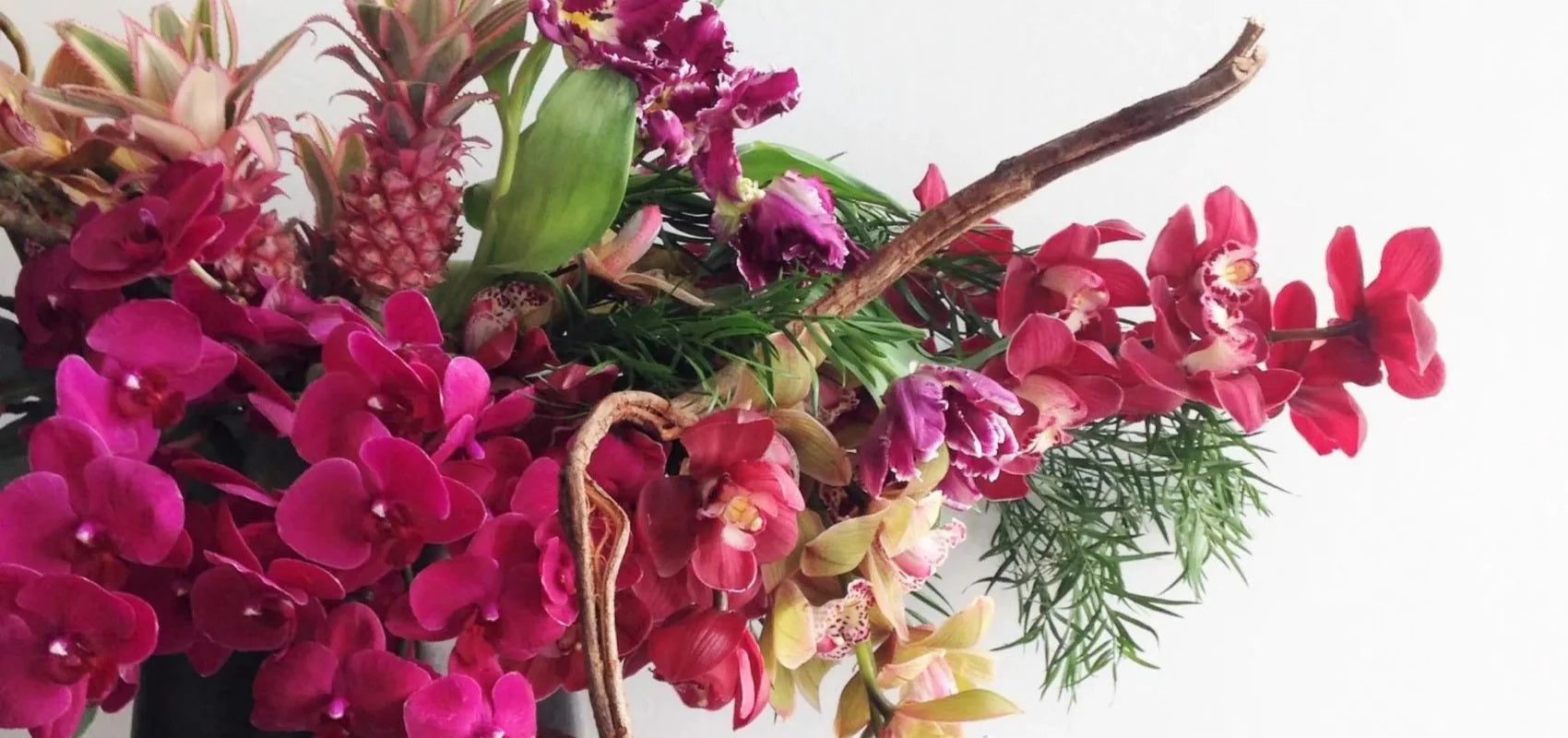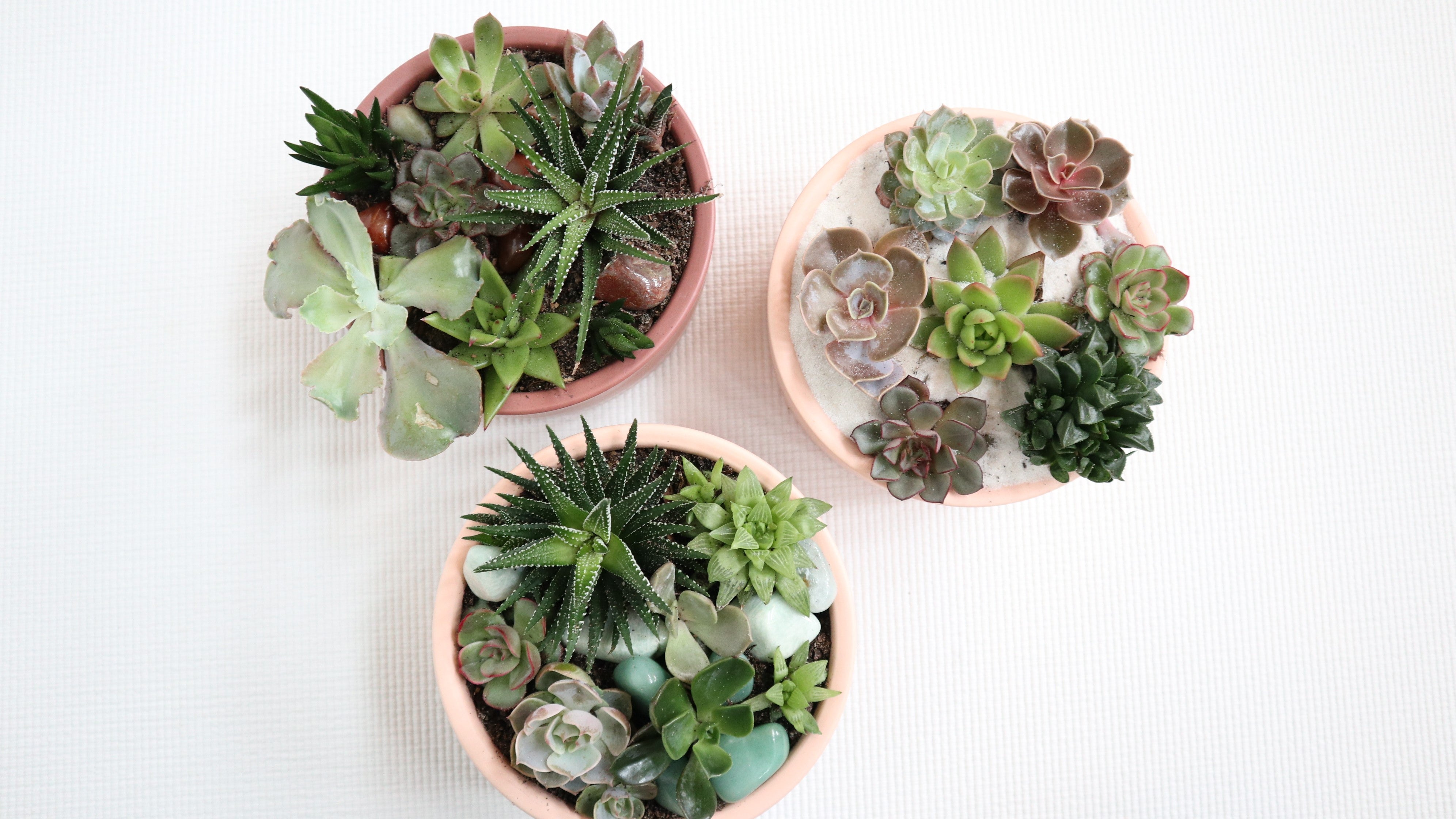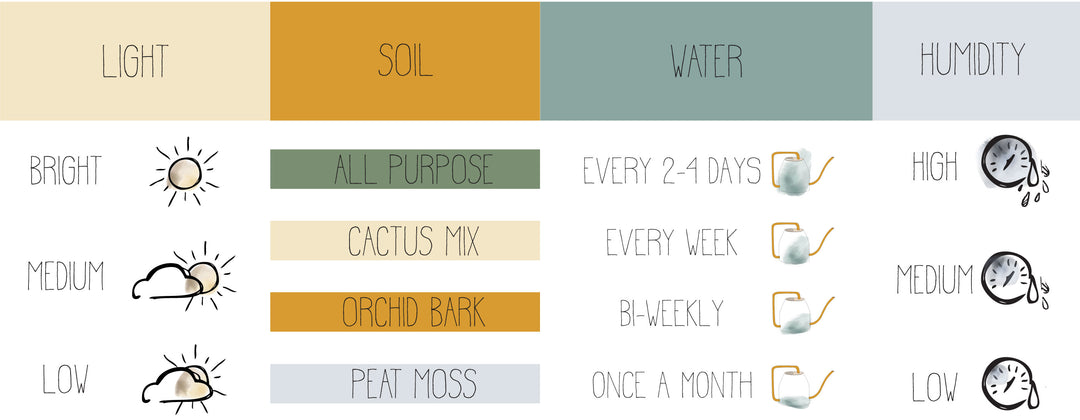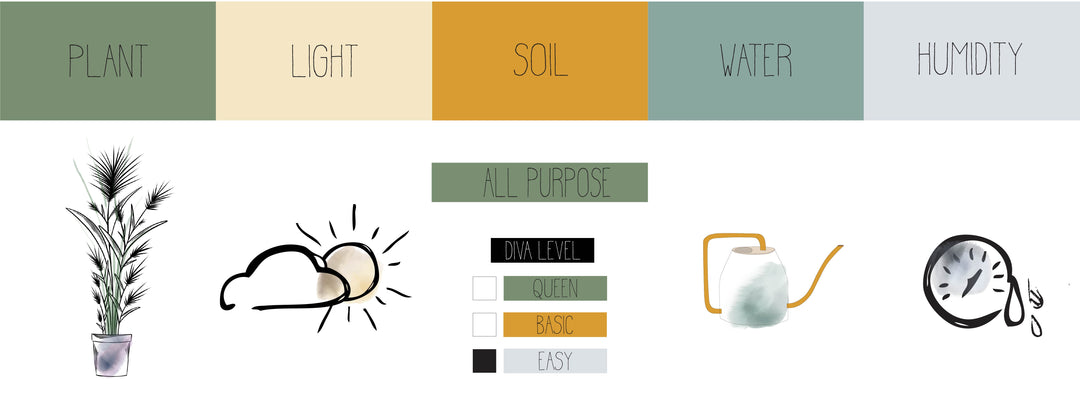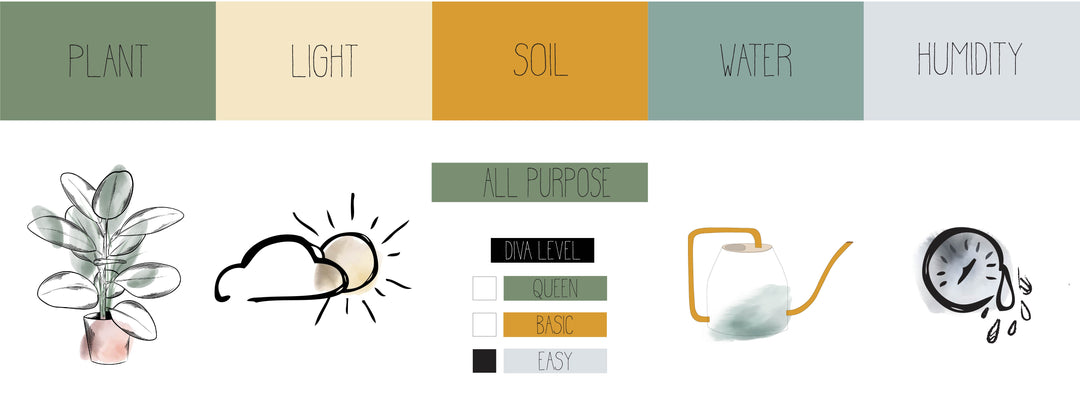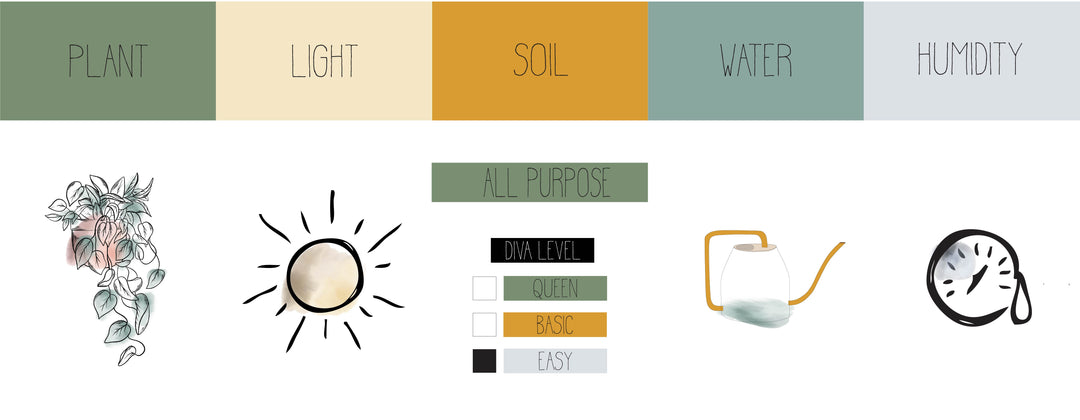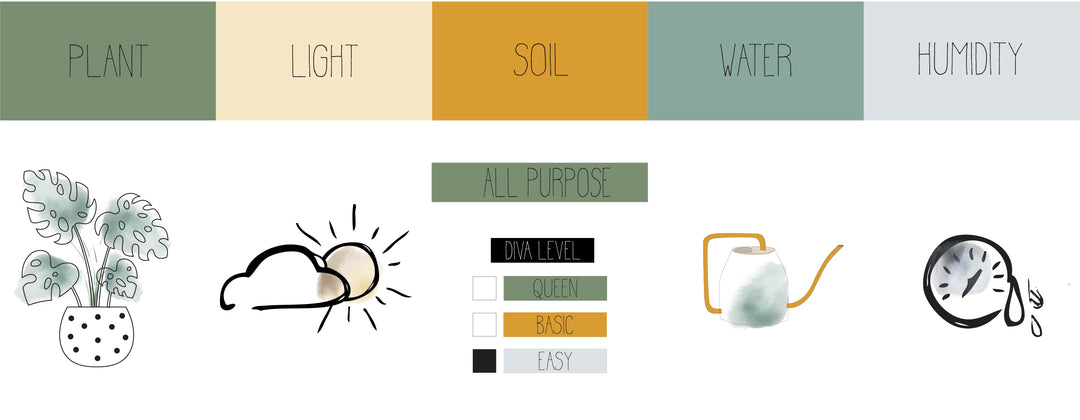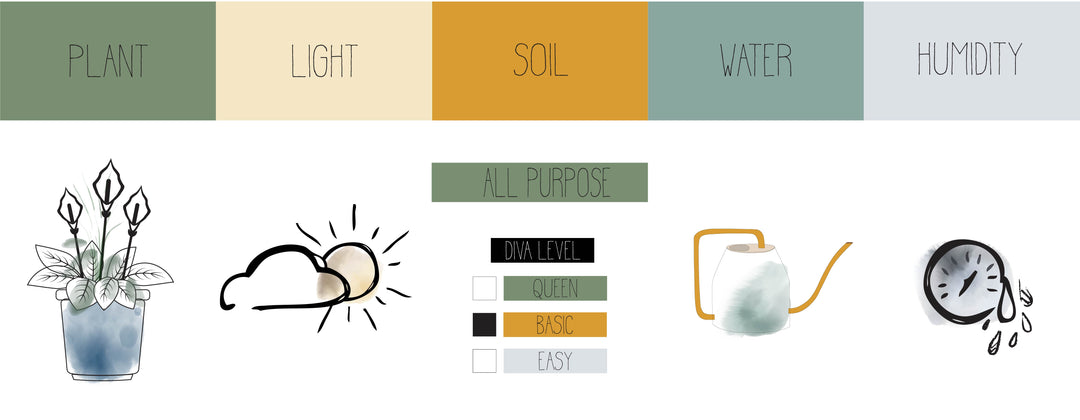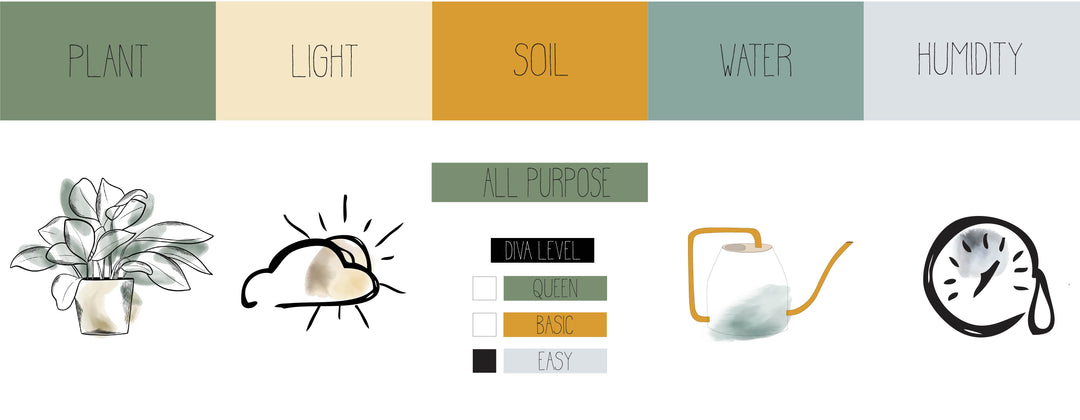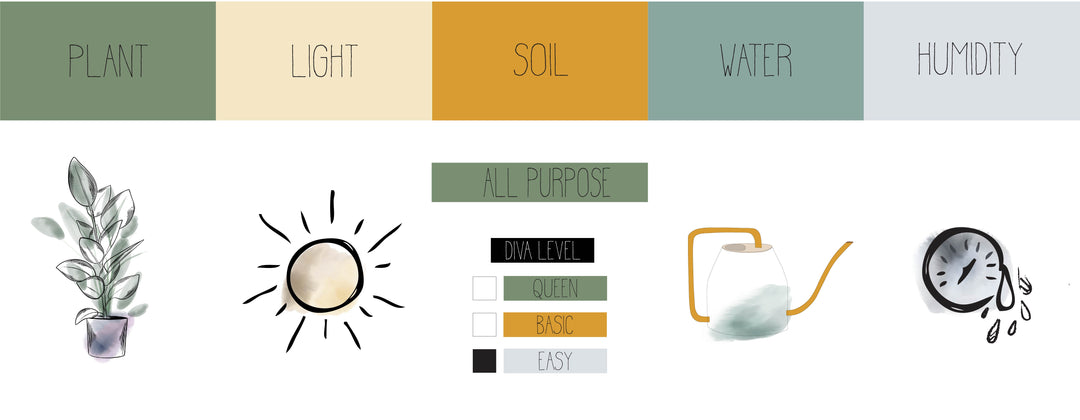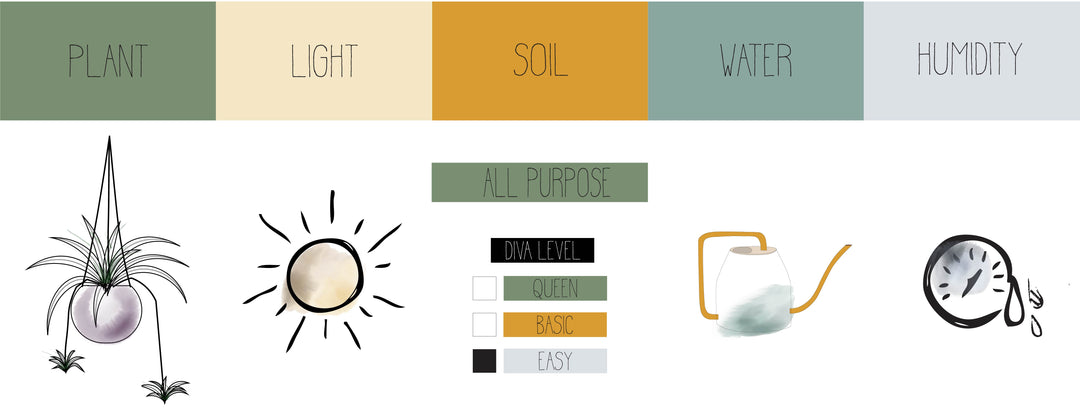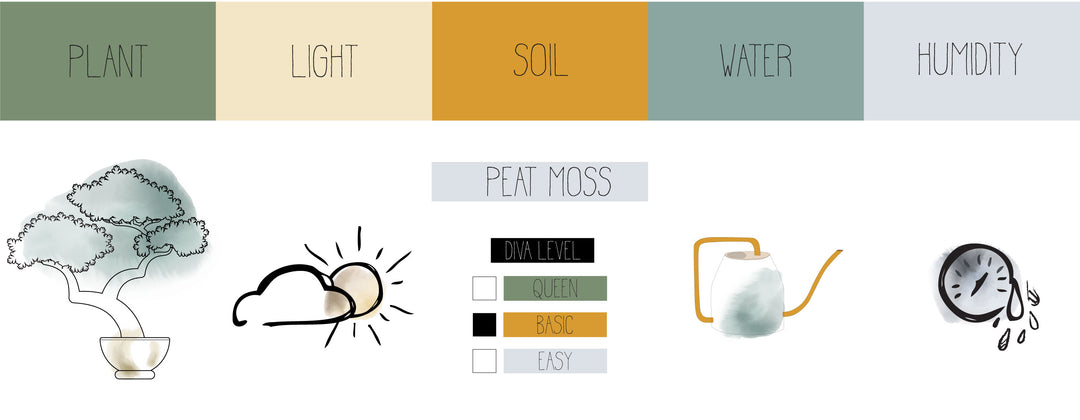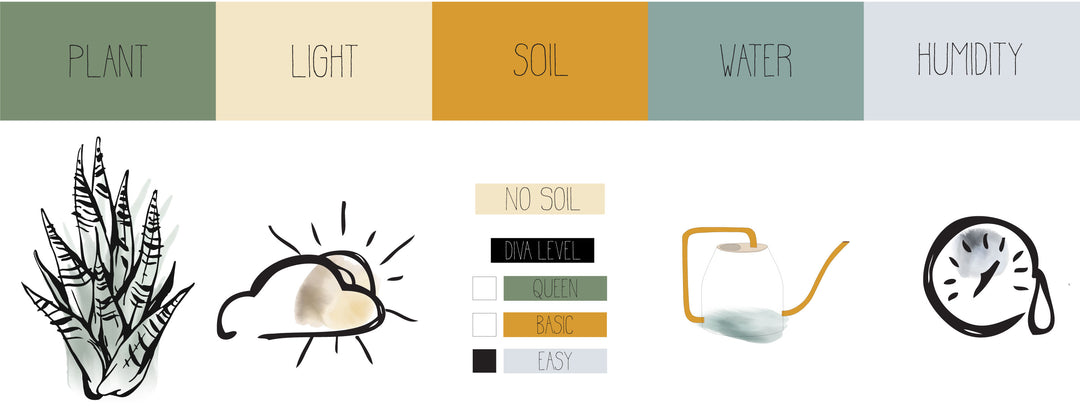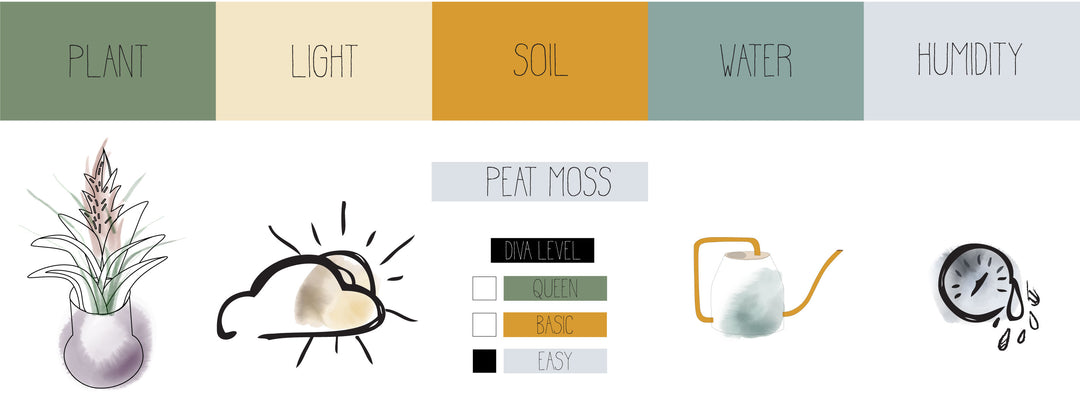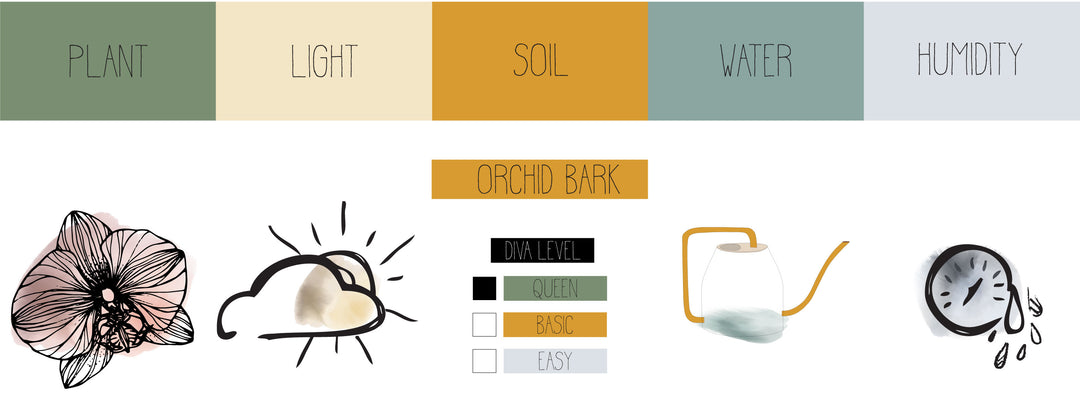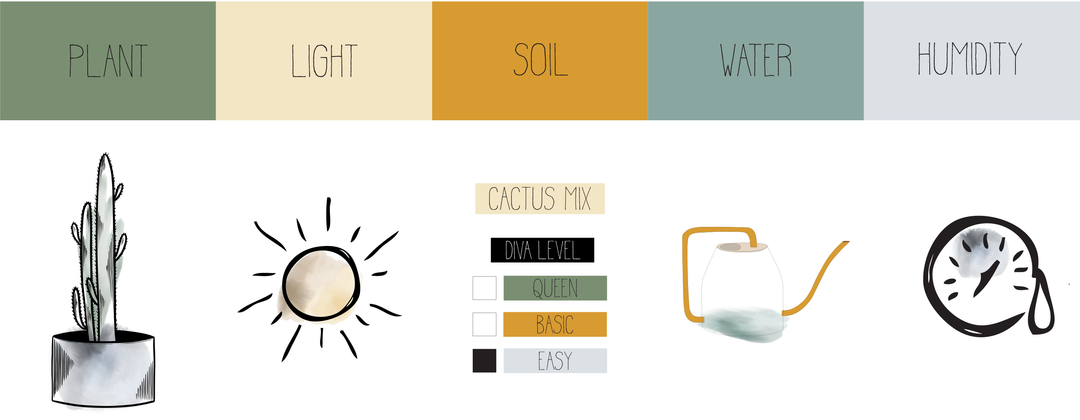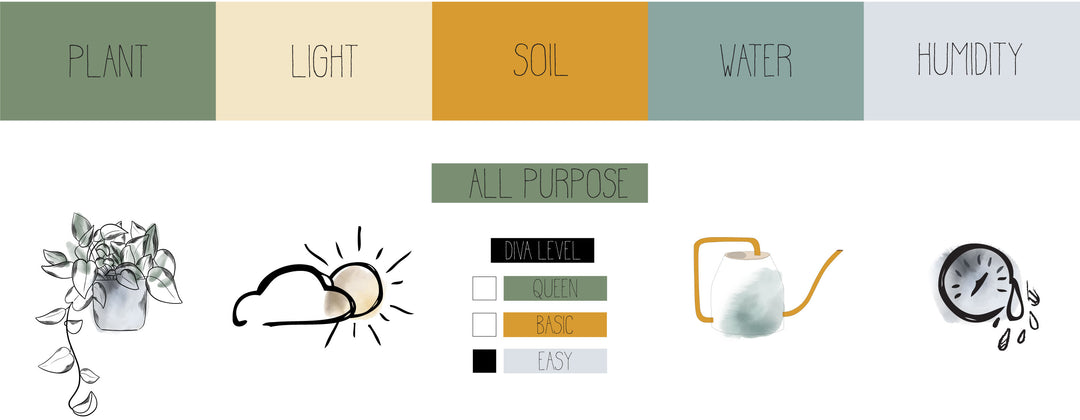Plant Care
Complete Plant Care Guide
Welcome to our comprehensive plant care resource! Whether you're a seasoned plant parent or just starting your indoor garden journey, we've compiled essential care tips to help your houseplants thrive. Below you'll find detailed guidance on the fundamentals of plant care, plus specific instructions for our most popular varieties.

Essential Plant Care Basics
💧 Watering Guidelines
Proper watering is the foundation of healthy plants. Most houseplants prefer to dry out slightly between waterings—stick your finger about 2 inches into the soil, and if it feels dry, it's time to water. Always use pots with drainage holes and water thoroughly until excess drains out the bottom. Overwatering is the #1 cause of houseplant problems, so when in doubt, wait another day.
☀️ Light Requirements
Bright indirect light: Near an east or west-facing window, or a few feet back from a south-facing window
Medium light: Several feet from a bright window or near a north-facing window
Low light: Areas away from windows but still receiving some natural light
Remember: no plant truly thrives in complete darkness. Rotate your plants quarterly for even growth.
💨 Humidity & Temperature

Most tropical houseplants appreciate humidity levels of 40-60%. Increase humidity by grouping plants together, using a pebble tray with water, or running a humidifier. Keep plants away from heating vents, air conditioners, and drafty windows. Ideal temperatures range from 65-75°F during the day and 60-70°F at night.
🌱 Soil & Fertilizing
Use well-draining potting mix appropriate for your plant type. Most houseplants benefit from fertilizing during the growing season (spring and summer) with a balanced, water-soluble fertilizer diluted to half strength. Reduce or stop fertilizing in fall and winter when growth naturally slows.
✂️ Pruning & Maintenance
Remove yellow or brown leaves promptly to redirect energy to healthy growth. Wipe dust from leaves monthly with a damp cloth to improve photosynthesis. Prune leggy growth in spring to encourage bushier plants. Always use clean, sharp scissors or pruning shears.
Common Plant Care Issues
Yellow leaves: Often indicates overwatering or poor drainage
Brown leaf tips: Usually caused by low humidity, fluoride in tap water, or fertilizer buildup
Drooping leaves: Can signal underwatering or root rot from overwatering
Leggy growth: Indicates insufficient light—move closer to a window
Pests: Inspect regularly for spider mites, mealybugs, or scale; treat promptly with insecticidal soap

Plant-Specific Care Guides
Please enjoy our infographics below showing basic care for some of our most popular plants, including air plants, bonsai, orchids, succulents, cacti, pothos, philodendrons, and poinsettias. Each plant has unique needs, so refer to the specific care card for your variety.
Quick Care Reference
Pothos & Philodendrons: Tolerant and forgiving, perfect for beginners. Medium to bright indirect light, water when top 2 inches of soil are dry.
Succulents & Cacti: Drought-tolerant desert dwellers. Bright light, infrequent watering (every 2-3 weeks), well-draining soil essential.
Orchids: Elegant bloomers that prefer bright indirect light, weekly watering (let roots dry between), and high humidity. Use orchid-specific potting mix.
Air Plants (Tillandsia): No soil needed! Soak in water for 20-30 minutes weekly, shake off excess, and display in bright indirect light with good air circulation.
Bonsai: Miniature trees requiring daily attention. Water when soil surface feels dry, provide bright light, and maintain humidity. Prune regularly to maintain shape.
Poinsettias: Holiday favorites that need bright indirect light and consistent moisture. Keep away from drafts and maintain temperatures above 60°F.
Seasonal Care Tips
Spring & Summer: Active growing season—increase watering frequency, resume fertilizing, and repot if roots are crowded.
Fall & Winter: Growth slows naturally—reduce watering, stop fertilizing, and provide extra humidity if heating systems dry the air.
Need More Help?
We're always adding additional plants and care tips to this resource. If you don't see what you're looking for or have specific questions about your plant, please reach out to our plant experts today. We're here to help your indoor garden flourish!
Pro tip: Take photos of your plants monthly to track their growth and catch any issues early. Happy planting!


